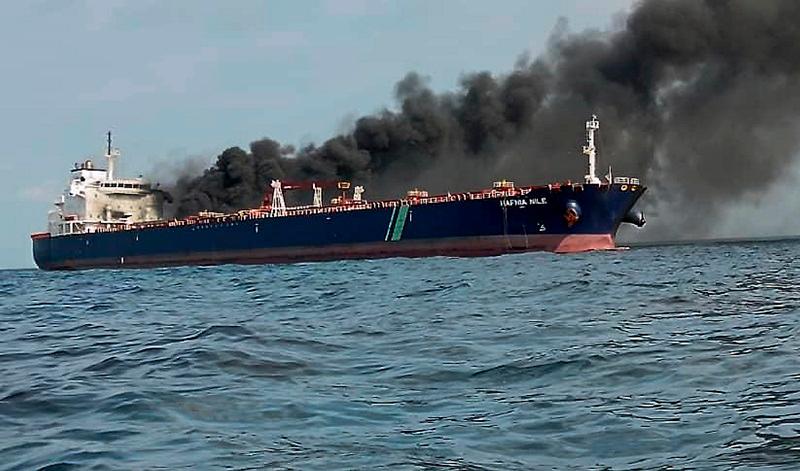KUALA LUMPUR: Malaysia’s coast guard said on Saturday that one of the two large oil tankers involved in a collision that led to fires on both had left the location of the accident and was believed to have turned off its tracking system.
The coast guard said it was tracking the whereabouts of the Sao Tome and Principe-flagged tanker Ceres I, which was suspected to be within Malaysian waters.
The Ceres I was involved in a collision reported early on Friday with the Singapore-flagged Hafnia Nile about 55 km (35 miles) northeast of the Singaporean island of Pedra Branca, the Maritime and Port Authority of Singapore (MPA) said on Friday.
The 40 crew on the Ceres I were all accounted for, the MPA had said, adding that 14 had been evacuated by a Singapore Air Force helicopter while 26 were conducting fire-fighting operations onboard.
The Chinese owner of the Ceres I could not be reached for comment.
All 22 crew aboard the Hafnia were evacuated and arrived in Singapore, its operator said on Friday.
Hafnia, the operator of Hafnia Nile, said on Friday a tug was on scene to assist the ship, with specialised tugs en route to join firefighting efforts.
A video taken on Saturday and posted by the Malaysian coast guard showed the charred Hafnia Nile afloat.
The exact circumstances leading to the incident are unknown.
Singapore’s MPA did not immediately respond to a request for comment on Saturday.
The Ceres I is a very large crude carrier (VLCC) supertanker, which ship-tracking data last showed was carrying around 2 million barrels of Iranian crude.
However, Iran’s oil ministry said on Saturday that neither ship had been carrying Iranian crude.
The area where Ceres I had been anchored is known to be used by so-called dark fleet ships for the transfer of Iranian oil in contravention of U.S. sanctions, Michelle Wiese Bockmann, principal analyst at Lloyd’s List Intelligence, said on Friday.
Matt Stanley, head of market engagement for EMEA & APAC with Kpler, said on Friday that the Ceres I has “gone dark” many times, referring to when vessels switch off their AIS tracking transponders.
The 74,000-deadweight-tons capacity panamax tanker Hafnia Nile was carrying about 300,000 barrels of naphtha, according to ship-tracking data from Kpler and LSEG.
Singapore is Asia’s biggest oil-trading hub and the world’s largest bunkering port. Its surrounding waters are among the busiest global sea lanes.









